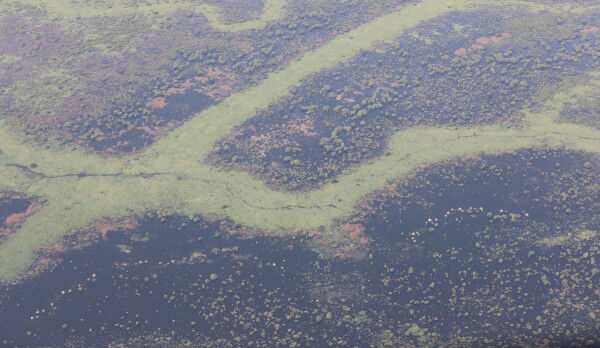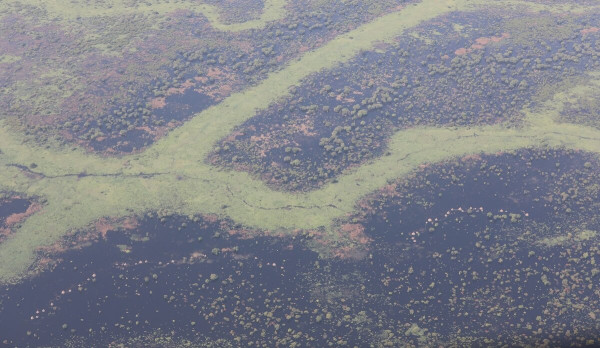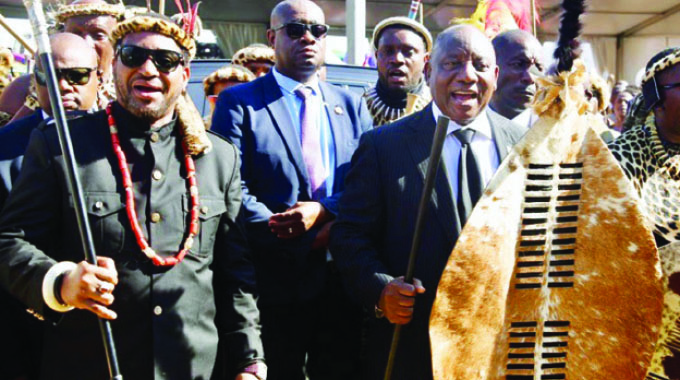Floods create fresh catastrophe for South Sudan on its difficult journey from war to peace


The view flying into Bentiu is almost other worldly. A glorious patchwork of colours: lush greens and inky blue with spots of rich mocha brown.
Touching down, the reality of what lies beneath this colourful quilt is shocking. A shroud of green and purple lilies covers a deep sea of filthy water full of rubbish, rotting animal carcasses, and snakes carving their way through the debris.
Seventy percent of Unity State is now under water because of the worst floods in sixty years. This is climate change in South Sudan.
It’s not an issue discussed much by people gathering under the trees to take tea in other parts of the country. Until now, there have been much bigger concerns – war, intercommunal fighting, cattle raiding, sexual violence, displacement, and the dire economic situation.
But there is a growing realization of the very real and present threat posed by climate change to people’s lives and the prospects of recovery.
“Even as we speak, the water is continuing to rise, and they are saying that the natural evaporation of the water will take 15 years. So natural evaporation is not an option. We are going to have to find a way of allowing people to return to their lives, connect to livelihoods and be able to return to their places of origin as dignified returnees. It’s going to take a significant effort.”
That is the assessment of the Special Representative of the Secretary-General, Nicholas Haysom, on a visit to Bentiu to see the situation first-hand and to meet with those affected.
Among them is Rhoda Ngor who fled her village in Guit County with her seven children, leaving behind her goats, crops, clothes and even cooking implements to be swallowed by the rising waters. Without food ration cards, she’s living off the generosity of relatives in the displacement camp.
“We lost everything during the flooding. We don’t have shelters, blankets, or clothes. Our children are walking around naked and don’t have shoes. We are suffering,” she says, huddling with other women and children on a threadbare mat in the shade of a nearby makeshift shelter.
Humanitarians are mobilising every possible resource to support the families despite huge shortfalls in funding. But it’s not enough. People are desperate, risking their lives to feed their families.
“Some women leave early in the morning to catch fish in the water. They try to sell them to put food on the table for their families, but they get bitten by snakes and dangerous insects,” says Erika Choul, who has also sought sanctuary in the camp with her two small children.
The United Nations Mission in South Sudan (UNMISS) is doing everything it can to help in partnership with humanitarians and local authorities.
Racing against time and tide, engineering peacekeepers from Pakistan have built more than 70 kilometers of dykes to protect the town, displacement camps and airport. For them and the community, there is a new kind of vigilance. The threat is no longer guns. It is water.
Displaced families prowl the perimeter constantly checking for cracks in the mud dykes. When they spot seepage, a call goes out to the peacekeepers and the International Organization for Migration who rush to respond with bulldozers, excavators, and water pumps. The community labour alongside them using buckets, pieces of metal, and even their hands to shore up what they call the last line of defence.
However, this is a temporary fix. The dykes have breached numerous times. While peacekeepers work 24/7 to rebuild them, more resources are urgently needed to find a solution before the rainy season arrives in a few months.
“We need to ensure in the short term that we are able to hold on to all the places that are dry today,” says Colonel Hameed Akbar, the commanding officer of the Pakistan military engineering contingent. “Moving forward, in the four or five months that we have left before the rain arrives, we need to pump in more resources to recover or reclaim those areas urgently required by the population that has been displaced, like the Rubkona village and the market area.”
The international community has supported South Sudan throughout its difficult journey. Billions of dollars have been dedicated to keeping the peace as well as feeding, sheltering, educating, and caring for the 8.3 million people in need of humanitarian aid.
But this country is not alone in its plight. Many others are struggling from conflict, extreme poverty, and the environmental havoc caused by climate change. With so many competing demands, it is difficult for donors to continue being so generous. But there is a plea not to forget South Sudan.
“My message to the international community would be to help and, if they have any doubts, about the scale of the crisis and the dramatic way that it has affected people’s lives, come here and have a look,” says Nicholas Haysom.
Peace began to descend on South Sudan when an agreement was signed between warring parties in 2018. Political violence has significantly reduced although sporadic conflict continues in pockets of the country. The relative calm enabled the transition of UN Protection of Civilians sites housing hundreds of thousands of people into conventional displacement camps under the responsibility of the government.
“We were planning to resettle these people, but the floods mean they will not be able to go home. They will stay here and rely on humanitarian assistance,” says Deputy Governor, Tor Tunguor. “It is not individuals or the government preventing their return. It is this natural disaster.”
The displaced community agree that their dream of going home has been dashed.
“Previously, we were thinking that, since peace was agreed and is being implemented, we would go home,” says Beny Makon, the deputy chairperson of the Bentiu displacement camp. “But with the floods, more people have arrived from villages outside and we have a very real fear that we will not be able to leave for at least a year because of the floods.”
While the human impact is immense, the wildlife is also suffering. Cheetahs and other natural predators have been forced to infiltrate the displacement camps to escape the water and find food. Giant cobras are hacked or beaten to death and two cheetahs are trapped in tiny makeshift cages because of the threat they pose to human life. In a neighbouring cage, a dead animal rots in the searing heat. There is no food for them and nowhere safe to release them.
Massive investment in infrastructure is needed to prevent this crisis from becoming a long-term catastrophe. The local government wants to construct 300 kilometers of permanent dykes in the town and counties. If dry land is not reclaimed so that people can grow crops and breed livestock, they will continue to rely on humanitarian relief.
“I can only promise, as UNMISS, that we are going to do our best to deal with this problem,” says Nicholas Haysom. “I think we all have an interest in the normalization of South Sudan and creating the conditions for people to have normal lives. I would encourage South Sudanese not to give up hope on that prospect.”
Hope is in short supply right now. But with a history of resilience and help from international friends, recovery and rebuilding is possible. If not in time for these families, at least for the next generation.
Distributed by APO Group on behalf of United Nations Mission in South Sudan (UNMISS).










Comments